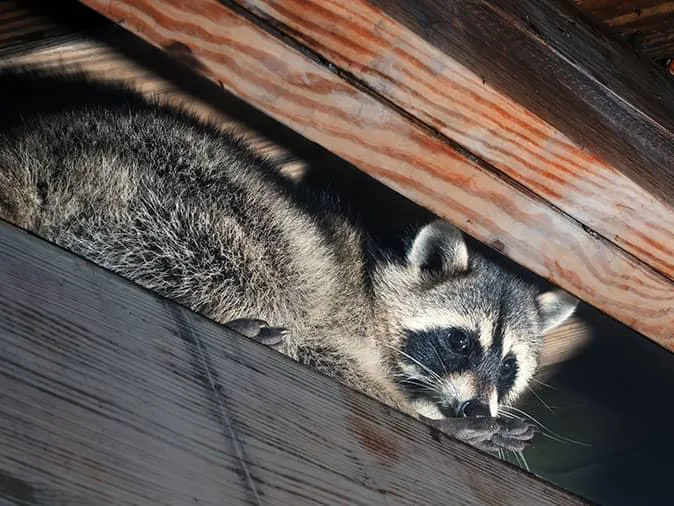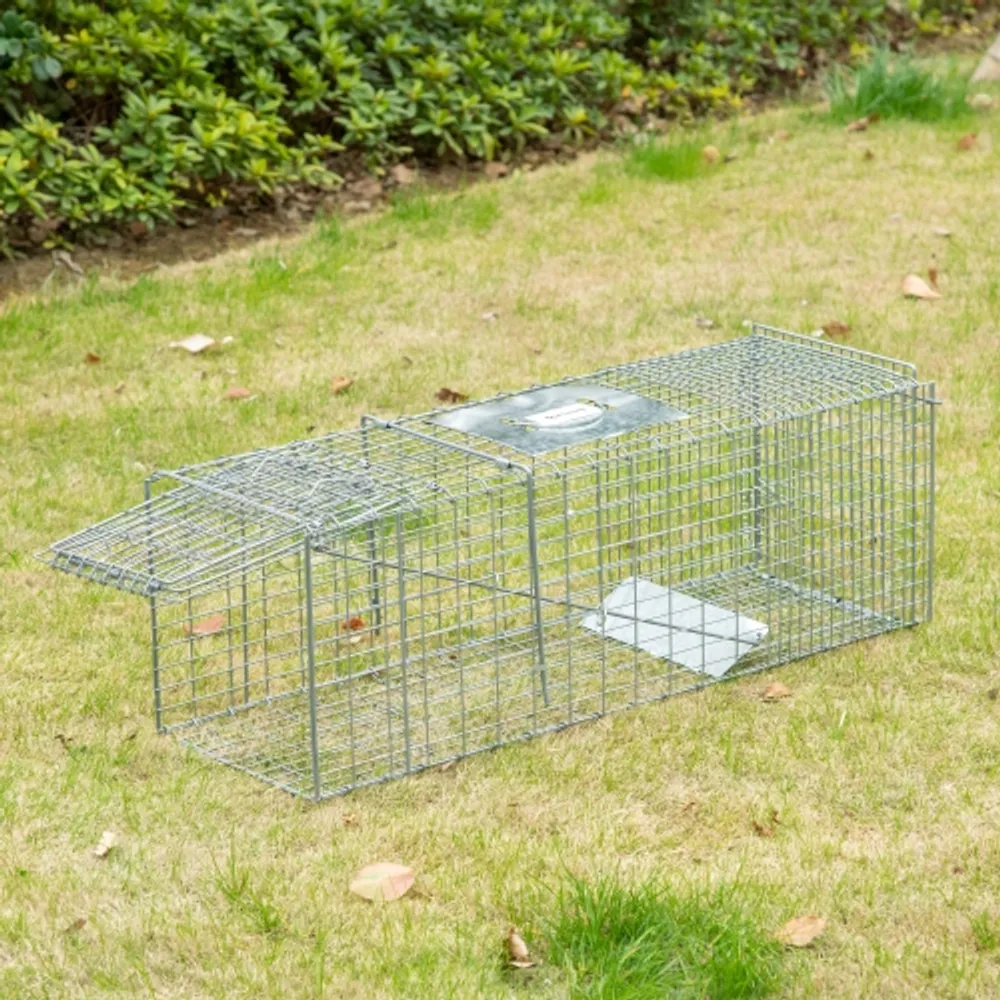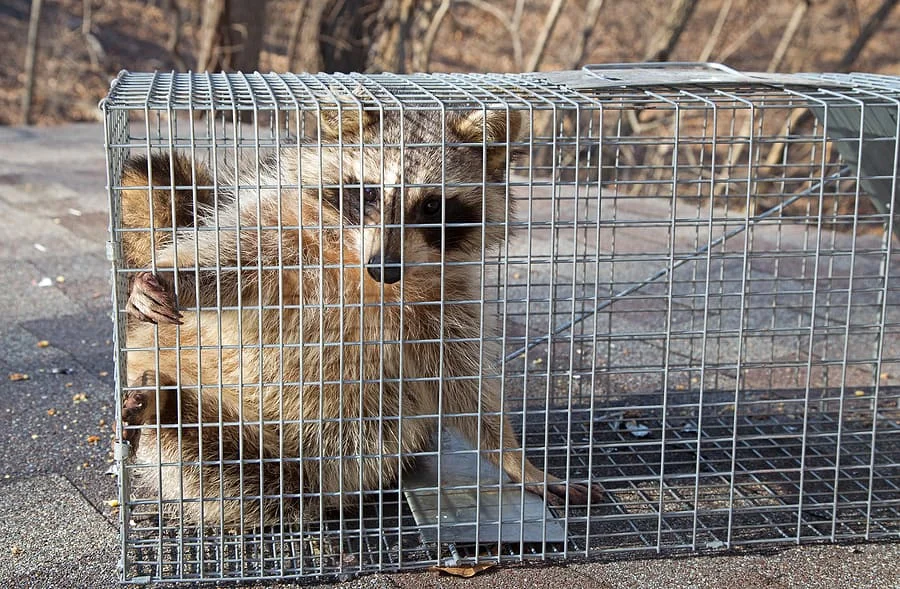
Raccoons are common pests that can cause significant damage to your property and spread diseases. If you have a raccoon problem, catching them with a live trap can be an effective solution. However, it's important to know how to properly use a live trap to avoid harming the raccoon and ensure a successful capture.
Firstly, it's important to choose the right type of trap. Live traps come in different sizes and styles, and choosing the right one will depend on the size of the raccoon and the location where it's causing problems. It's also important to select a trap that's humane and won't cause unnecessary harm to the raccoon.

Once you have the right trap, it's important to properly bait and set it up. Raccoons are attracted to food, so using a bait that's appealing to them can increase your chances of success. It's also important to set the trap in a location where raccoons are known to frequent, such as near their den or where they've been seen scavenging for food. With these tips in mind, you'll be well on your way to successfully catching raccoons with a live trap.

To catch a raccoon with a live trap, you'll need a sturdy and reliable trap. The trap should be large enough to accommodate the size of a raccoon, and it should be designed to prevent the animal from escaping once it's caught. Look for traps that are specifically designed for raccoons, as these will typically have features like a sensitive trigger mechanism and a secure locking mechanism.
Bait is essential when using a live trap to catch a raccoon. Raccoons are omnivores, so they'll eat just about anything. However, they tend to prefer sweet and fatty foods, so baits like marshmallows, honey, and peanut butter are good options. You can also use canned cat or dog food raccoon bait for live trap because they love that smell!
When setting a live trap for a raccoon, it's important to wear protective clothing to prevent injury. Raccoons are nocturnal, intelligent animals that can become aggressive if they feel threatened. Wear thick gloves and long sleeves to protect your hands and arms, and consider wearing a mask to protect your face from scratches and bites.
By having a sturdy live trap, sweet bait, and protective clothing, you'll be well equipped to catch a raccoon that is causing damage to your property or getting into your trash.

If you’re wondering how to catch a raccoon with a live trap, setting up the trap correctly is crucial. Here are some important steps to follow:
One of the most important things to consider when setting up a live trap for raccoons is the size of the trap. Raccoons can vary in size, so it's important to choose a trap that is large enough to accommodate the size of the raccoons in your local area. A cage trap that is at least 32 inches long, 12 inches wide, and 12 inches high is a good place to start.
Once you have the right size trap, it's important to place it in the right spot. Look for areas where raccoons are known to frequent, such as near trash cans or in your backyard. Make sure the trap is on a flat surface and is stable so that it doesn't tip over when the raccoon enters.
To increase your chances of catching a raccoon, you'll need to make the trap enticing to the animal. One way to do this is to place bait in the trap, such as cat food or peanut butter. You can also use a scent lure that is attractive to raccoons, such as fish or marshmallows.
By following these steps, you can set up a live trap for raccoons that is effective and humane. Remember to check the trap regularly and release any animals caught as quickly as possible.
Once the raccoon has been successfully trapped, it is important to check the live trap regularly to prevent the raccoon from becoming distressed or injured. Here are some guidelines to follow when checking and emptying the live trap.
It is recommended to check the live trap at least once every 24 hours, and more frequently in hot weather to prevent the raccoon from becoming dehydrated. If the trap has been set in an area where there is high raccoon activity, it may be necessary to check the trap more frequently. Some homeowners ask how long can a raccoon live in a trap, and the answer depends on so many factors, that we always recommend checking it, as we said before, once every 24 hours, even more frequently if possible to avoid harming any wildlife.
Before attempting to remove the raccoon from the trap, make sure to wear gloves and protective clothing to avoid being bitten or scratched. To safely remove the raccoon from the trap, follow these steps:
It is important to release the raccoon in a safe and suitable location, away from residential areas and busy roads. Make sure to release the raccoon during daylight hours to give it the best chance of survival.
Remember to always handle the live trap with care and to avoid placing your fingers near the trigger mechanism. Use a suitable bait such as canned cat food or marshmallows to attract the raccoon to the trap, and avoid using any type of poison or harmful substance.
By following these guidelines, you can safely and effectively catch a raccoon with a live trap.

Using a live trap is an effective and humane way to catch raccoons that may be causing damage or posing a threat to your property. By following the tips and advice outlined below, you can safely and efficiently trap a raccoon and release it back into the wild.
One of the main benefits of using a live trap is that it allows you to catch the raccoon without harming it. This is important because raccoons are a valuable part of the ecosystem and play an important role in controlling insect populations. Additionally, using a live trap is often more cost-effective than hiring a professional pest control company.
Trapping raccoons can be difficult, as they are intelligent and can be aggressive when cornered. It is important to choose a trap that is large enough to accommodate the raccoon and to place it in an area where the raccoon is likely to be active. It is also important to check the trap regularly and to release the raccoon as soon as possible to avoid causing unnecessary stress or harm.
Once you have successfully trapped the raccoon, it is important to release it in an area where it can thrive. This may include a nearby park or wooded area with a source of water. It is important to release the raccoon in an open area where it can easily escape and avoid any potential predators.
Overall, trapping a raccoon with a live trap can be a difficult but rewarding experience. By following the tips and advice outlined above, you can safely and humanely catch and release a raccoon back into the wild. Remember to always treat raccoons with respect and care, as they are an important part of our ecosystem.
Raccoons are known to be attracted to sweet and savory smells, so using bait that is high in sugar content or has a strong odor is recommended. Some effective bait options include marshmallows, peanut butter, canned cat food, and honey.
Before trapping raccoons, it is important to check with local wildlife agencies to ensure that it is legal to trap them in your area. In some regions, it may be illegal to trap and relocate raccoons, while in others, a permit may be required. It is also important to follow all guidelines and regulations when trapping raccoons to avoid any legal issues.
To prevent a raccoon from escaping a live trap, it is important to choose a trap that is sturdy and has a secure latch. Additionally, placing a heavy object on top of the trap or covering it with a blanket can prevent the raccoon from escaping. It is also important to check the trap frequently to ensure that the raccoon is not left trapped for an extended period of time.
If raccoons are avoiding live traps, it may be helpful to change the location of the trap or switch up the type of bait being used. Additionally, setting up multiple traps in different locations can increase the chances of catching a raccoon.
Raccoons are primarily nocturnal animals, so the best time to trap them is during the night. However, raccoons may also be active during the early morning or late evening hours.
To properly set up a Havahart or similar live trap for raccoons, it is important to choose a location where raccoons are known to frequent, such as near a trash can or in a garden. Bait should be placed at the back of the trap, and the trap should be set up in a way that prevents the raccoon from accessing the bait from the outside. Once the trap is set up, it should be checked frequently to ensure that any trapped raccoons are released in a timely manner.
At Critter Stop we have provided hundreds of raccoon removal services in the Dallas - Fort Worth area. Our crew is ready to take your call and help you to get rid of raccoons! It doesn’t matter if they are having the snap of their life inside your attic, our team will set some traps and humanely remove and relocate them in a safe zone. Contact us at (214) 234-2616 to start solving your problem!
Visit our Critter Library and learn more about our furry friends